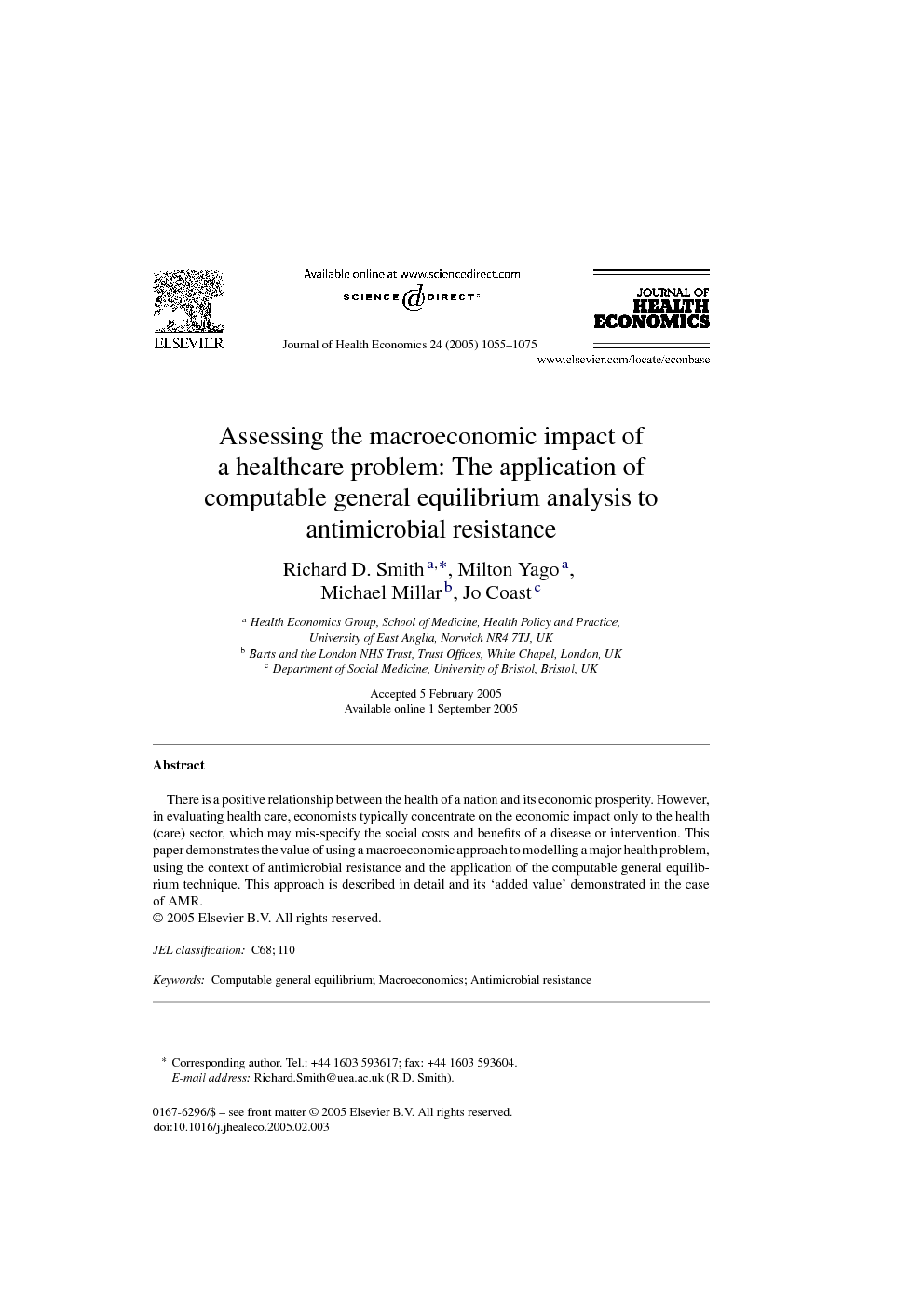As recently illustrated by the Commission on Macroeconomics and Health (Sachs, 2001), the positive relationship between the health of a nation and its economic prosperity is well recognised (Pritchett and Summers, 2001). That ill health reduces not only individual welfare, but also impacts on national economic performance, has been clearly demonstrated, for example, in the case of malaria and HIV/AIDS (Gallup and Sachs, 1998, Kambou et al., 1992 and Sachs and Malaney, 2002).
However, health economists typically concentrate on the economic impact only to the health care sector. Although this is occasionally broadened to include the effect on the individual (typically, the patient), the wider impacts are rarely considered. Yet, given the size of effects beyond the health (care) sector that may occur in some instances, knowledge about the social efficiency of policies may depend upon the assessment of these wider effects (Smith et al., 2003 and Bloom and Canning, 2000).
It has been suggested that antimicrobial resistance (AMR),1 and policies to address AMR, require analyses that move away from the narrow, microeconomic approach that is currently used (Smith and Coast, 2002). Empirical studies of AMR and interventions to address AMR, typically consider only the costs to the health sector of increased hospitalization, tests and treatment (Wilton et al., 2002); occasionally, the impact of increased mortality and morbidity to the patient/family and society is considered (Eandi and Zara, 1998, Bloom and Mahal, 1997, Coast et al., 1996, Coast et al., 2002, Ibelings and Bruining, 1998, Washio, 2000, Romero-Vivas, 1995, Haddadin, 2002, Blot, 2002 and Kim et al., 2001). However, these estimates do not take account of the multiplicity of effects of AMR on non-health sectors and wider economic indicators, such as national income, labour supply and economic growth (Eandi and Zara, 1998). The economic impact of AMR is further influenced by the international movement of people, whether a country has a pharmaceutical research and development sector, agricultural use and international trade (Smith and Coast, 2003, Coast and Smith, 2001, Coast and Smith, 2002, Coast and Smith, 2003 and Coast et al., 1998). Again, these wider factors are not usually considered.
In principle, a full societal cost–benefit study should be able to take an economy-wide approach and account for these factors. However, not only has this not been conducted for AMR, but it would be extremely difficult to conduct without a model of the economy, which incorporated the interaction of AMR (interventions) with other sectors of the economy (Wilton et al., 2002 and Eandi and Zara, 1998).
To provide a more complete assessment, a framework for measuring the economy-wide impact of a health problem, such as AMR is, therefore, required. Such a framework is provided by the computable general equilibrium (CGE) approach (Shantayanan et al., 1997 and Vargas et al., 1998). The purpose of this paper is thus to demonstrate the value of using a macroeconomic approach to modelling a major health problem through applying the CGE approach to AMR; although the implications for wider economic analysis in health are not limited to this example. Following this introduction, the paper provides a brief overview of the CGE approach, outlines the development of a CGE model of AMR, presents the results of counterfactual experiments using this model and concludes with a discussion of the value of this approach


